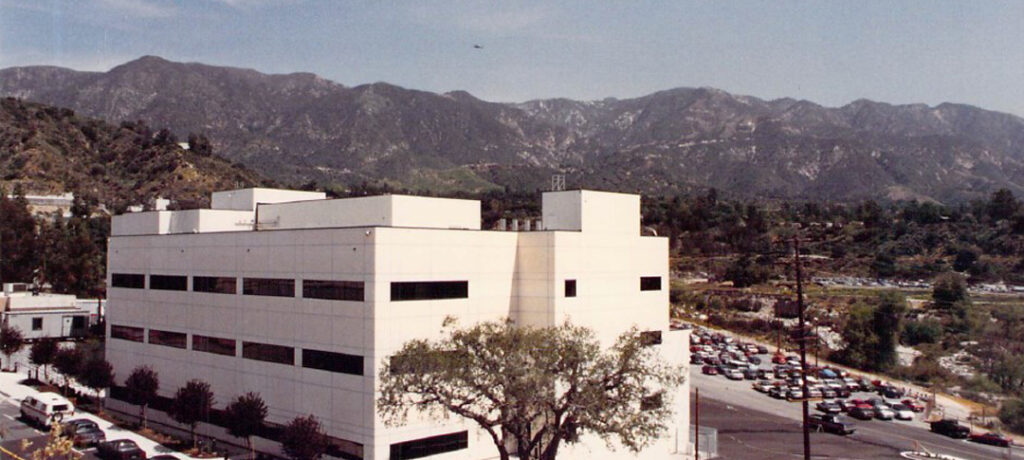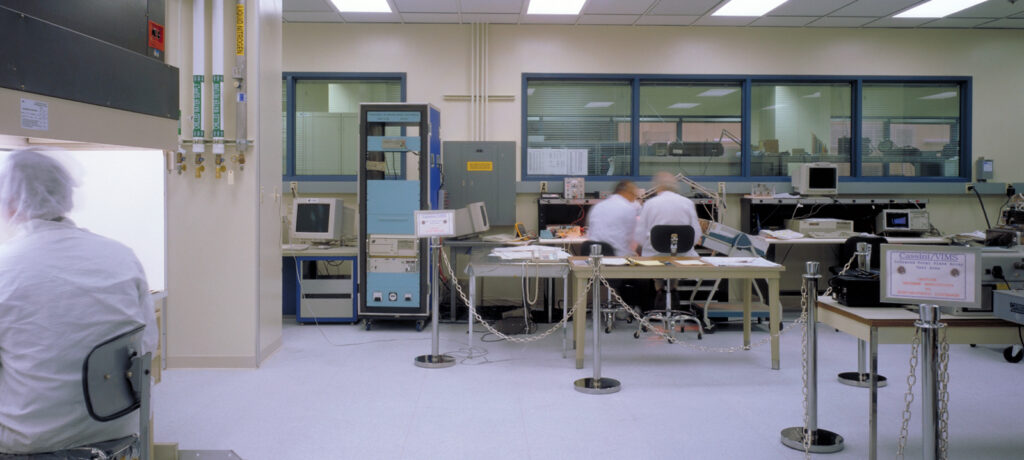Kitchell’s Role in NASA’s Jet Propulsion Laboratory
When NASA’s Jet Propulsion Laboratory (JPL) set out to build a facility capable of simulating the harshest environments in the known universe, they turned to Kitchell. In the early 1990s, Kitchell was selected to construct the Observational Instruments Laboratory (OIL)—a five-story, 72,000-square-foot research facility designed to support the development of powerful optical systems used in space telescopes and exploratory spacecraft.
JPL, managed by Caltech, has long been NASA’s epicenter for robotic space exploration. The OIL project was more than a building—it was a launchpad for discovery, designed to empower scientists to detect distant stars, planets, and galaxies with extraordinary precision.
Engineering Earth to Mimic Space
The challenge? Build an Earth-based facility with the precision of a spacecraft—an environment clean and still enough to develop instruments capable of capturing data across millions of light-years.
To meet this unprecedented performance threshold, Kitchell collaborated closely with JPL technologists and end users to deliver a facility engineered to extremes. The lab required Class 1,000 and Class 10,000 cleanrooms, vibration levels within 1–2 microns, and shielding from electrostatic discharge. Even a stray dust particle or minor tremor could jeopardize scientific outcomes.
To achieve near-zero vibration, isolation pads were installed beneath the penthouse structure, and ultra-low-vibration mechanical systems were selected. Circular ductwork minimized air turbulence. Advanced outgassing controls protected delicate materials during instrument assembly. Every detail—down to the flooring—was scrutinized for its impact on performance.
Innovation in Action
“It is vital that the building allow us to create the conditions found in outer space-very clean surroundings and very low vibration,” said Dr. William Whitney, JPL Division Technologist and project liaison. Even the slightest disruption, he noted, could compromise the integrity of the data.
The OIL was also among the earliest facilities at JPL to consolidate multiple optical disciplines under one roof, enabling cross-functional collaboration across astrophysics, Earth science, and planetary exploration. That vision shaped not only what was built—but how it was built.
Instruments developed in this lab went on to support some of NASA’s most ambitious missions—including Project Cassini, a collaborative effort between NASA, the European Space Agency (ESA), and the Italian Space Agency (ASI), which delivered breathtaking insights into Saturn, its rings, and its moons. The facility’s contributions helped enable the precision optics and imaging technologies that made Cassini’s 13-year journey a landmark in planetary science.
Collaboration That Drives Discovery
Constructing a facility this advanced required more than expertise—it demanded shared purpose. Kitchell led an integrated team of over 65 subcontractors and six full-time JPL inspectors, ensuring open lines of communication and real-time coordination through interdisciplinary meetings.
One such collaboration tackled the application of specialized conductive flooring, balancing scientific rigor with practical constructability. These touchpoints weren’t just about solving challenges—they cultivated mutual ownership of the mission.
“We feel if the workers understand the reasons for the extra measures and their importance, they’ll take extra pride in meeting the quality standards,” said Jerry Leonardi, JPL’s owner representative. That mindset of shared ownership ultimately elevated the quality of the final product.
A Foundation for Exploration
Decades later, the Observational Instruments Laboratory remains a cornerstone in JPL’s innovation ecosystem—and a proud milestone in Kitchell’s legacy of delivering environments that enable scientific advancement. From exploring Earth’s climate to capturing first-of-their-kind images of distant star systems, the instruments born in this facility continue to fuel humanity’s greatest explorations.
At Kitchell, innovation goes beyond what’s built—it’s about enabling the breakthroughs that push the boundaries of what’s possible.

